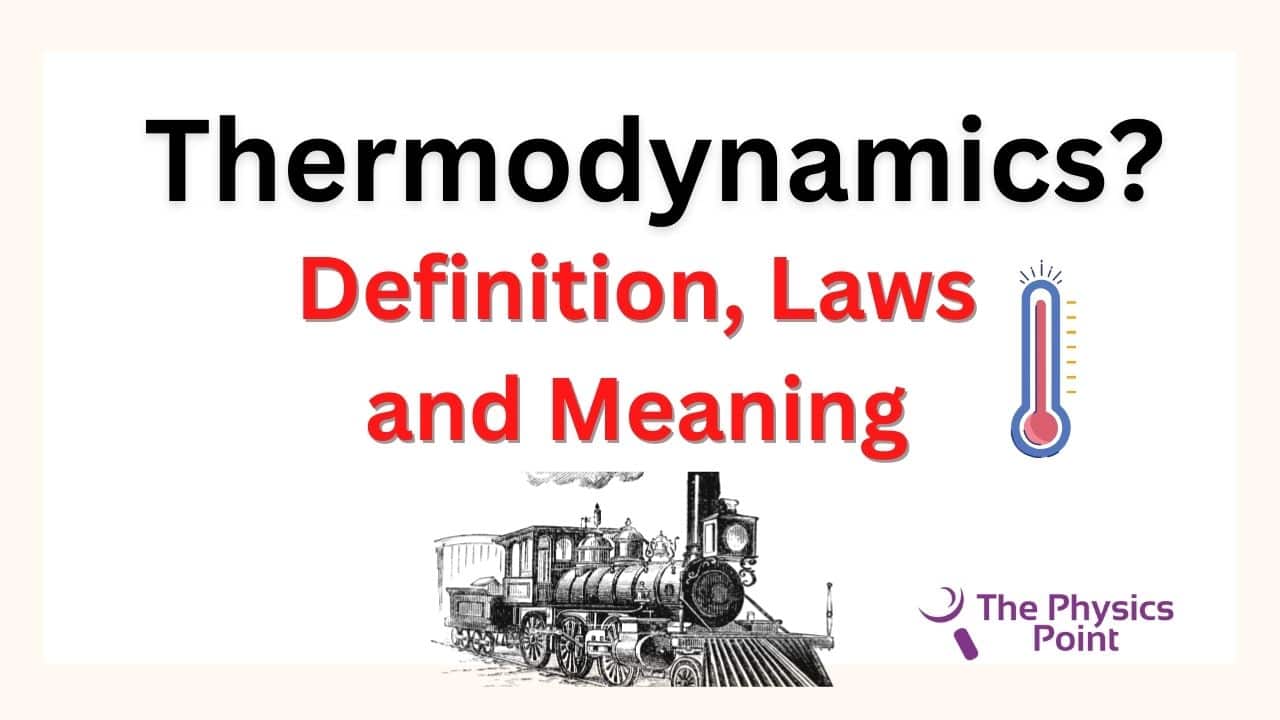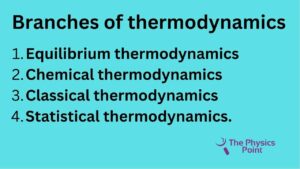What is Thermodynamics? Definition, Laws and Meaning

Hello, dear reader of the Physics website. You are very warm welcome on our physics blog. Today we are presenting another interesting article on what is thermodynamics. in this blog we will study all aspects of thermodynamics. after mechanics in Physics, this is the most important branch. and it is a branch of Physics that we are observing in our day-to-day routine. Such as, the thermos flask bottles keep your coffee or tea hot for a very long time. This process comes under thermodynamics. Many of the important topics will be described in this most important article and we will give you here thermodynamic Simple explanation.
Some important questions like What is Thermodynamics, what thermodynamics definition, what are thermodynamics, what is thermodynamics system, What is thermodynamic in physics, what thermodynamics rules and laws and thermal dynamics meaning, what does thermodynamics mean, etc are asked in different types of states and medical exams as well as engineering exams also. so you have to read this article very carefully because no concept should be missed from your understanding.
What is thermodynamics (Definition)?
Thermodynamics is a physics branch in which we also deal with the concepts of heat and temperature. The great scientist billion Thomson give the term thermodynamics in 1749. In this important branch of physics, we also studied the interconversion of energy and heat. there are four laws of thermodynamics that are governed by the study of thermodynamics. and total thermodynamics is based on these laws. In the article what is thermodynamics we study many things in depth about this topic. we can also say that it is a branch of Physics at the macroscopic level.
Branches of Thermodynamics
Basically, thermodynamics is divided into four major classes or branches that are given below.
Classical thermodynamics, Chemical thermodynamics, Equilibrium thermodynamics, and Statistical thermodynamics.
1. Classical Thermodynamics
This is the branch of Thermodynamics in which we analyze the behaviors of matter at a macroscopic level. In classical thermodynamics, temperature, and pressure-like quantities are studied this helps us to understand another property and the predictions of the characteristic of that matter which is going in the experimental process.
2. Chemical Thermodynamics
In this branch of Thermodynamics, we studied the interconversion of heat and work between the chemical reactions and we also studied the changes in the state of the matter.
3. Equilibrium Thermodynamics
In this branch, we studied energy transformations and matters when they lie in the equilibrium state. it means we made all the thermodynamically study at the equilibrium.
4. Statistical Thermodynamics
Under this branch of thermodynamics, we studied the interactions of the molecules and how they react with other molecules in any system.

Systems in Thermodynamics
You all are thinking that what is thermodynamic system? Thermodynamics is a branch of Physics in which there are many types of unique terminology. We are here to define thermodynamics systems, systems are also one of the parts of that terminology. in this article what is thermodynamics, we are going to describe the systems of thermodynamics in very simple words.
First of all, we need to know what is the system. The system in Thermodynamics is a specific part of the matter on which we are performing the experiment. the system also has a boundary that can be real or imaginary or also can be fixed or deformable. and everything besides the system that has a direct impact on the experimental value of the system is considered as surrounding.
1. Isolated system
This type of system cannot interchange the energy or the mass with the surroundings so we call it the isolated system. our universe is also an isolated system.
2. Closed system
This type of system transfer only energy but cannot transfer mass between its surrounding. here we can say that a closed system can transfer energy between its surrounding.
3. Open system
The system is an open type system, in which the mass, as well as the energy, can be transferred in the system between its surrounding if we talk about an example of an open system, we can consider a steam turbine.
Laws of Thermodynamics
There are a total of four laws of thermodynamics, which are given below-
1. Zeroth law of thermodynamics
This law states that if the two bodies are in equilibrium will another third body then the first body and the third body are also in thermal equilibrium or we can say the whole system is within the thermal equilibrium.
2. First law of thermodynamics
This law of thermodynamics says that we cannot create energy or destroyed it. we can only change its form to another form.
3. Second law of thermodynamics
This law says that the energy of an isolated system is always increasing.
4. Third law of thermodynamics
According to the third law of thermodynamics, at the absolute temperature, the entropy of the system is constant.
Processes in Thermodynamics
When any system work according to thermodynamical processes, such as there is some energy change, pressure change, or the change of volume and internal energy then at that time some processes are occurring. Basically, thermodynamic processes are divided into four categories and every category possesses the unique characteristics that are described below.
1. Isochoric process
In this process, there is no change of volume, and the result, the system does work equal to zero. it means the volume of the system remains constant in the isobaric process. ΔV=0, so work is also equal to 0.
2. Isobaric process
In this process, there is no change in the pressure of the system occurs. it means the pressure of the system remains constant in the isobaric process. ΔP=0
3. Isothermal process
In this process of thermodynamics, the temperature remains constant. we can say that there is no change in the temperature of the system. ΔT=0
4. Adiabatic process
This is a very special type of process of thermodynamics. In this process, there is no exchange of heat. it means the heat remains constant in the adiabatic process. ΔQ=0

Conclusion
In this important article on physics, what is thermodynamics? We studied the process of thermodynamics, what is thermodynamics in physics, thermodynamics physics definition, thermodynamics explained, the definition of thermodynamic system, etc. if you have any query doubt, or any suggestion you can below the article in the comment box. We will welcome your suggestions.
